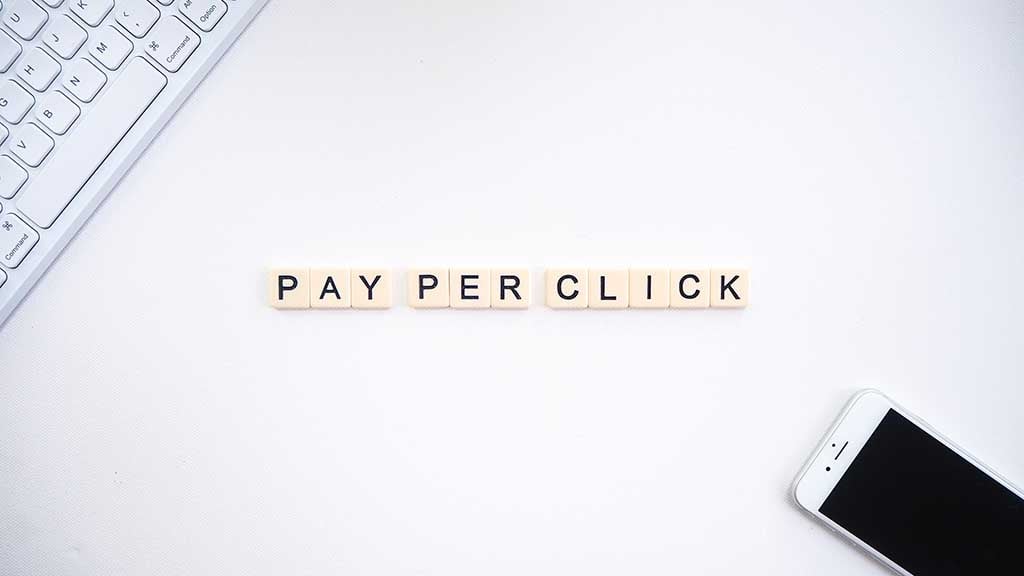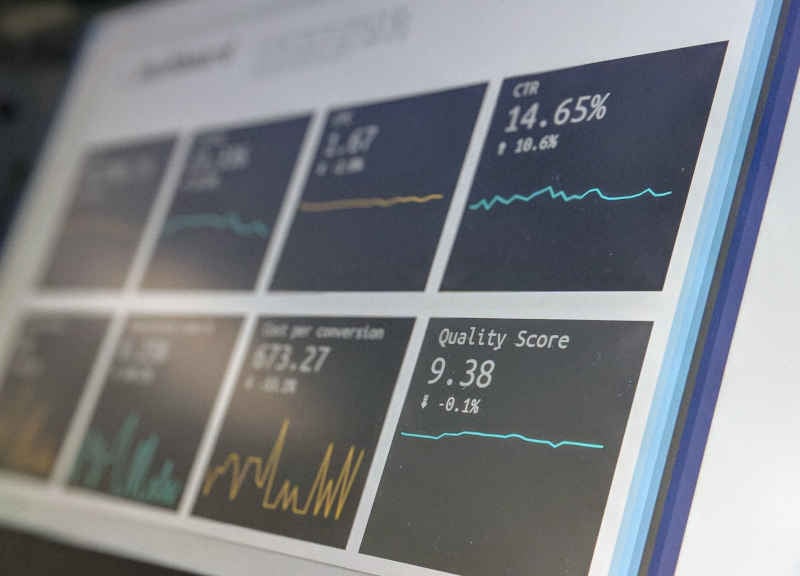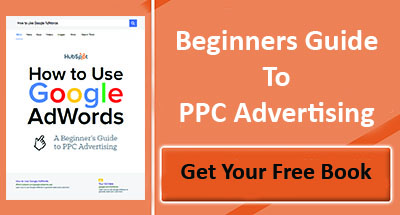What is Pay Per Click Advertising? The Beginner's Guide to Google Ads
- Home
- What is Pay Per Click Advertising? The Beginner's Guide to Google Ads
Digital marketing is complex. Without help, a single channel can take weeks and months to master in a way that builds revenue for your company. There are hundreds of possibilities, and not all of them are free. Pay per click advertising in particular has a reputation of being expensive.
Complexity, of course, does not and should not mean staying away from a particular tactic. That's particularly true for PPC, an umbrella term now commonly used for Google ads. Planned and executed the right way, it can give your website and overall business a significant boost; according to Google, businesses bring in an estimated $2 for every dollar they spend on the PPC platform AdWords.
And yet, its complexity is undoubtedly difficult to sift through. We're here to help. Consider this your beginner's guide to PPC, an introduction to Google ads that also covers common terms, campaign best practices, and potential outcomes you can expect when running a successful campaign.
Check out our PPC services >> here <<
What is Pay Per Click Advertising?

Image ref: https://launchpresso.com/
Defined loosely, the term PPC (short for Pay-Per-Click) refers to any messages where the sender pays when a recipient doesn't just view, but clicks on the ad. In today's digital advertising landscape, that's almost every type of ad. So the term has become more narrow.
In 2019, PPC refers to search engine ads, either through Google or Bing.
Even though search engines like Bing offer PPC ads, Google is the major player in this game. Through its AdWords ad platform, it holds a 37% market share in the digital advertising industry, almost twice as much as second-place Facebook and far above other competitors. Throughout this article, we'll refer to PPC campaigns as 'Google Ads'--although Bing Ads are often interchangeable and very similar.
Working with Google provides marketers with two basic ad type options:
- Search Ads, which are text-based ads that appear near the top of relevant search results. You've likely seen them anytime you try to find an answer or go on a deep dive on the world's largest search engine.
- Display Ads, which are visual banners that display on the millions of websites who have partnered with Google on advertising space as part of its Display Network. Targeting is limited by the parameters and budget you set in AdWords, but this tactic allows you to reach more than 90% of global internet users.
The Benefits of Google Ads
With a basic definition of PPC complete, let's talk about PPC management and the reasons you should dive into Google ads. We've already mentioned the ROI potential with a 2:1 average return in the introduction to this post.

It doesn't end there:
- Intent-based targeting. All PPC ads work based on either keywords or recent actions. That means you can define your audience by their actions, helping you find those potential customers most likely to be looking for a product or service like yours.
- Brand awareness through vast reach. Google processes more than 3.5 billion searches a day as the world's most frequented website. Meanwhile, the Google Display Network encompasses more than 2 million websites, many of them among the world's most popular.
- Tangible outcomes. Most PPC ads focus directly on both web clicks and conversions on your website. Each of those are tangible steps to take your audience forward in their buyer's journey, helping your business grow.
- Fast results. In many ways, PPC is the short-term variant of the long game that SEO emphasises. You can focus on the same keywords and audiences, but get faster tangible results (sometimes within a week) in the form of web visits and conversions.
- Cost control. Within Google, you have close control over your budget, setting specific daily and weekly limits that avoid stretching too far. That you're only paying when someone clicks on your ad means that your budget only diminishes when the ad shows results.
- Measurability. We'll get into the details of analytics within search ads below. For now, the most important thing to know is that everything about PPC is inherently measurable, allowing you to constantly draw conclusions and make relevant updates.
- Competitive needs. If you don't jump on Google ads, your competitors will. In fact, companies have begun to place ads on branded searches for their competitors, which makes building your own Google ad presence even more important.
The benefits, of course, mean little if you don't know how to approach this advertising strategy or build your first campaign. That's why the rest of this article will focus on the functional details around PPC ads, starting with common terms.
A Glossary of the PPC Terms You Need to Know
Based on the above benefits, you've decided to dive in. Now, it's time to learn about the various terms that you will quickly encounter to make sure you can build a successful campaign with the background knowledge you need.

Bidding: Google ads are placed based on automatic bidding. Companies aiming for the same keyword compete against each other in real-time to see who gets the right to place the ad. It happens automatically, in the fraction of a second, based on the budget parameters you set.
Broad match: An option that allows you to broaden your targeting. When selected, your ads will show when your keywords show up in any order and in the context of other ads.
CPC: cost per click, or how much a keyword you decide to bid on will cost you for every single click someone makes.
Click rate: The percentage of internet users seeing your ad who actually clicked on it.
CPM: cost per 1,000 impressions. While PPC ads don't charge based on impression, this can be a helpful secondary metric to help you understand how expensive it is to get your word out.
Conversion rate: The percentage of people clicking on your ad who took some defined action after that, such as filling out a sign up form, buying your product, or visiting your website's pricing page.
Impressions: the number of times your ad is seen by your audience. Not to be confused with reach, which is the number of unique users seeing your ads.
Keyword: a word or, more commonly, phrase that you bid on to place an ad on the page where your audience sees results for that same keyword.
Long-tail keyword: A longer phrase, such as a full sentence or question, that defines your targeting more narrowly and allows you to place more relevant ads.
Position: the average spot your ad occupies in search results for the targeted keyword. An average position close to 1.0 should be your goal.
Quality score: A metric, defined automatically by Google, that determines the relevance of your ad based on both the keyword that triggers it and the landing page it leads to. A higher quality score (more relevance to your audience) means lower cost and better likelihood of the ad being placed.
Retargeting: The ability to target your ads to recent web visitors. Especially popular for display ads; banners placed on Google's Display Network allow you to stay top of mind for audiences who have already shown enough interest to visit your website in the recent past.
ROAS: The ratio of money you gained (or lost) on the campaign relative to the amount of budget you invested.
Search volume: the average number of monthly searches for a given keyword.
The 5 Components of a Successful PPC Strategy
A basic knowledge of PPC, of course, is only the beginning. Your Google Ads strategy (and every campaign that falls under it) should follow a number of best practices to ensure its success. After all, you need to make sure that you don't just throw money at a problem, but work strategically to receive a positive return.
These 5 components can help you achieve that goal.
1) Current State Audit and Analysis
Where do you stand, and where do you want to go? A healthy amount of self-reflection is immensely valuable before you roll out any digital campaign, and that's especially true when it comes to PPC campaigns.

In this stage, gather the data you need to set the baseline. Understand both who and how many visitors come to your website during the average month. Try to break down where those visitors come from, as well, especially as it relates to organic searches that could be related to your SEO.
The outcome of this step: an understanding of your audience as it relates to search, along with the baseline for your goal metrics throughout the campaign.
2) Pre-Launch Research
With the baseline in place, it's time to think about the research that has to predate any PPC strategy and individual campaign. That research tends to be two-fold: understand your competition, and understand the keywords you want to focus on.
Competitive research includes understanding your industry, and how your closest competitors are using paid search. Use the right tools (or work with a partner who has them), and you can actually gain insight into their most successful keywords and messaging points.
Keyword research is as important to PPC as it is to SEO. It helps you understand the types of words and phrases your audience searches for, along with their CPC, competitiveness and expected search volume. These variables take the guesswork out of the campaign set up.
3) Goal Setting
What does your campaign actually need to achieve? Are you looking for brand awareness and top-level clicks, or more in-depth conversions? Every campaign needs to be focused toward a specific goal that relates specifically to your sales funnel.
When it comes to Google ads, goal setting is both a theoretical and a technical process. On a high level, you have to set campaign goals that allow you to track your progress and determine whether or not the money is well-spent. The inherent measurability of PPC, though, means it doesn't have to stop there. /p>
Through integrating your Google Ads account with Google Analytics, you can set campaign goals that show conversions and other types of goals within the software itself. You can even attach goal values to help you get to the more ROI-oriented metrics like ROAS.
4) The Campaign Build
As evidenced by the first three steps, preparation is absolute key for a successful PPC strategy and campaign. Of course, the build-out itself also matters if you truly want to succeed and get the most out of your Google ads.
It means making sure that the text doesn't just fit into the right parameters, but also matches both the keywords and the landing pages to which it relates. It means setting the right budget and ensuring the right bids to actually place ads. And of course, it means finalising the targeting (or focusing on retargeting) before the ads go live.
In this stage, mobile has to become a core consideration. Mobile devices are now responsible for almost 65% of all clicks on paid search ads. Taking a 'mobile first' approach that ensures your ads are optimised for mobile consumers is vital to success.
5) Analytics and Continuous Improvement
PPC campaigns, like other digital marketing efforts, cannot be a set-and-forget initiative. Even the best research can turn out to be wrong; you simply cannot predict what your audience will search for and react to with 100% certainty. Instead, you need a continuous improvement mindset as you build those campaigns.

If you've set the right goals, you already know what you're working towards. Almost immediately after the campaign starts, you will begin to see campaign performance data that you can compare against those goals. Draw conclusions, and make adjustments (from copy changes to different keywords) as the campaign runs along.
A/B testing can be a crucial piece of your PPC efforts here. It allows you to split-test slightly different ad or targeting variations, allowing you to draw conclusions based on their performance. That helps you test new ideas and seek new growth opportunities. The result tends to be higher ROAS and ROI to maximise the opportunity for campaign success.
How to Leverage PPC for Consistent Business Growth
Of course, this guide is just the beginning. Each of the above 5 component deserves significant consideration, and comes with a number of substeps and decision stages in its own right. Despite its immense benefits and opportunities for your business, the fact that PPC is complex still remains true.
That means you will need some training and education before you dive in. The alternative is working with an external partner who is already familiar with the space. Either way, this base understanding of PPC is the start you need to leverage the channel for consistent business growth.

